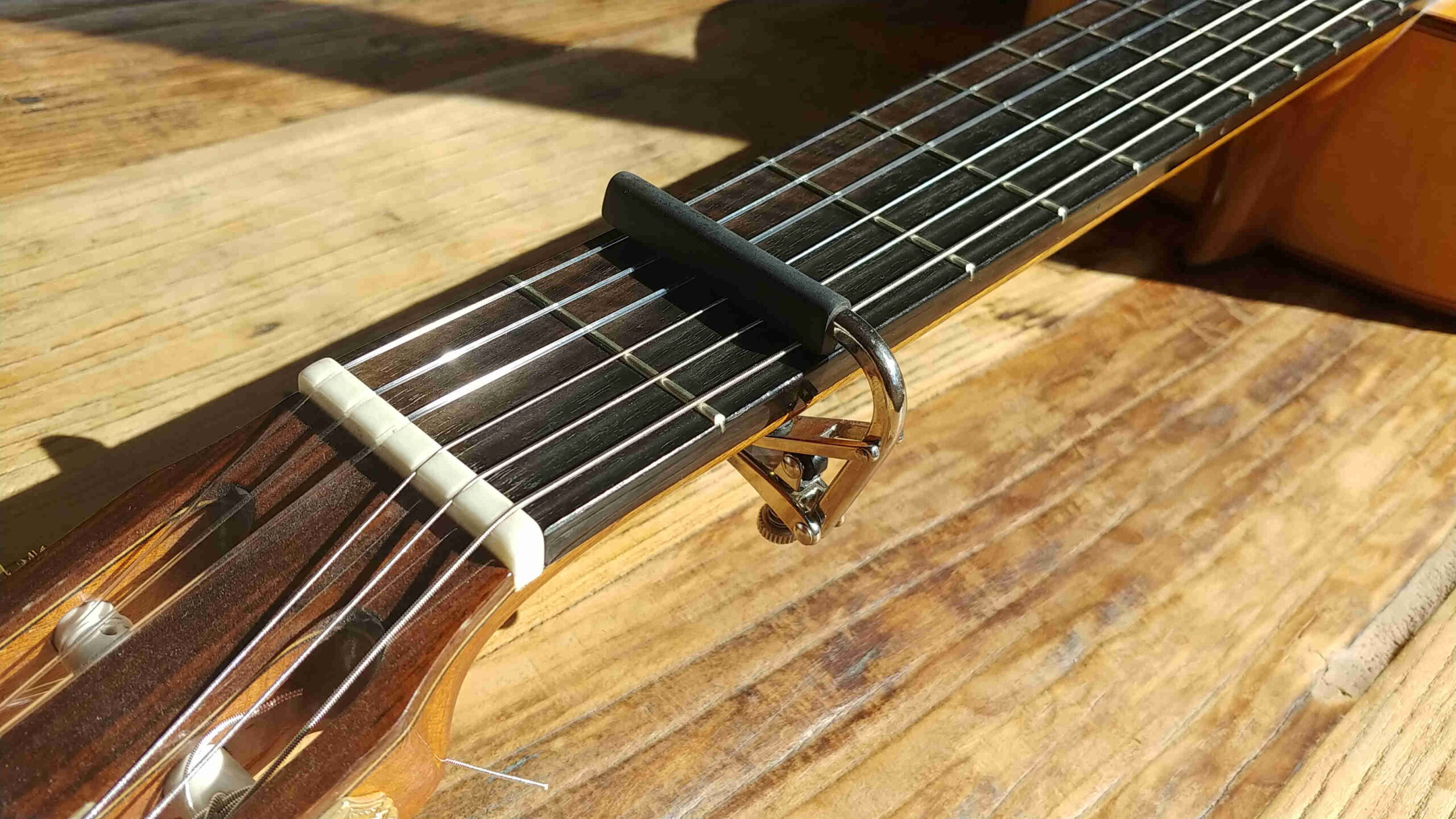Every standard guitar has the same notes but not all notes are created equal: wolf notes cry out for the wrong type of attention.
Wolf notes occur wherever the frequency of one of the harmonics of a note coincides with a mode of the guitar body – both vibrate together. The lower harmonics tend to exhibit this phenomenon the most.
The result is a note that is initially louder than others and often inharmonic (the overtones are not musical). This can also result in difficulty tuning and even fret buzz as the string oscillations get progressively out of step with each other.
Dr Bernard Richardson, who studies instruments at Cardiff University’s School of Physics and Astronomy, says well-constructed guitars tend to exhibit several wolf notes. The most prominent and difficult to conceal associated with the main body resonance, usually found in the range F#3 to G#3.
Strong coupling also occurs with the guitar’s air resonance, which is usually about an octave below the main resonance. But wolf notes can also occur elsewhere.
“Instruments with low-pitched main body resonances tend to have rather ‘romantic’, ‘boomy’, ‘Spanish’ sounds whereas those with higher-pitched main body resonances tend to be brighter and with a more ‘neutral’ sound,” he says.
The video below shows luthier Trevor Gore investigating this problem. The guitar he tests had a wolf note at 110Hz (A3) and its harmonic at 220Hz (the A on the guitar’s third string would be the most noticeable and disturbing wolf note). He plans to fix this problem by moving the body resonances to other than an octave separation.
“Let’s consider the main air resonance first,” Gore said. “We can do that by making the whole of the guitar box a little softer, for example, by reducing the top stiffness and reducing the back stiffness and that will reduce the frequency of the main air resonance, or we can change the sound hole diameter. If we make diameter is smaller, the air resonance will reduce. If we make the sound hole larger, the frequency of the air resonance will increase.”
To change the top resonance would require adjusting the stiffness and mass of the top.
“We can add mass to make the resonant frequency go down or we can reduce stiffness to make the resonant frequency go down. Or we can add stiffness to make the resonant frequency go up or we can reduce mass to make the resonant frequency.”
However, the only way to truly get rid of wolf notes is to produce a less responsive instrument. Taming them produces guitars with different characteristic sounds.
You can download the free software Gore used here and check the frequency response of your guitar. However, the software is not easy to set up and you should be able to hear a wolf note when playing anyway.
For those who don’t want to go down the path of adjusting the guitar, Dr Richardson suggests a different approach.
“If a player has a particularly troublesome wolf note, they can try stringing with lower-tension strings (which helps a little) or trying to alter their right-hand stroke so that the string is released in a more horizontal fashion (only really possible with certain pieces of music when you have time to use such a deliberate stroke).”








